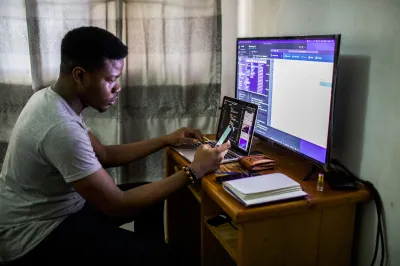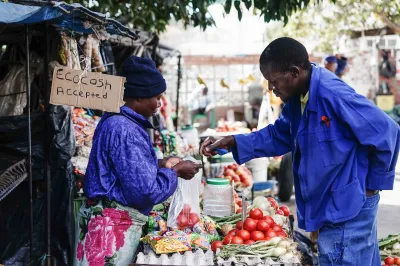Mitigating DFS Consumer Risks: Insights from Sub-Saharan Africa
Globally, COVID-19-driven digitization has boosted financial inclusion. But emerging evidence indicates that digital finance consumer risks are increasing and, if not mitigated, could undermine users’ trust in financial services. In Sub-Saharan Africa, mobile money is the key enabler of account ownership and usage, especially for women. GSMA’s mobile money prevalence index (MMPI) shows that 24 of the 26 countries with a ‘very high’ or ‘high’ MMPI are from Sub-Saharan Africa.
Research in Côte d’Ivoire and Kenya suggests that negative experiences have discouraged some users, especially women, from using mobile money. For example, a mobile money user in Côte d’Ivoire saved 10,200 West African Franc (CFA) every month via mobile money and expected to receive 122,400 CFA at the end of the year. But when it came time to cash out, she only received 92,000 CFA. She complained to the service provider, but when the provider failed to resolve the complaint, she stopped saving through mobile money altogether.
CGAP’s global research findings and insights from a recent event with Banque Centrale des États de l'Afrique de l'Ouest (BCEAO), South Africa’s Financial Sector Conduct Authority (FSCA), Financial Sector Deepening (FSD) Kenya and GSMA highlight risks that affect digital financial services (DFS) users in Sub-Saharan Africa and measures to mitigate them.
Cybersecurity issues and digital illiteracy contribute to risks
CGAP’s research identified multiple DFS consumer risks posing a regional threat; some linked to cybersecurity. According to a survey, 69% of regulators in Sub-Saharan Africa indicated that COVID-19 increased cybersecurity risks and the COVID-19-driven perceived harmful impact of financial technology on consumer protection was higher in Sub-Saharan Africa (40%) than the global average (13%).
Afrobarometer’s digital literacy index, which denotes digital literacy as a measure of how often people use a mobile phone and the internet, indicates that only about a third of respondents used both a phone and the internet frequently. But there were substantial differences across countries in Sub-Saharan Africa. While more than half of respondents in Mauritius, Gabon, Sudan and South Africa used a mobile phone and the internet regularly, no more than 10% were frequent users in Mali, Niger and Madagascar. The survey also revealed that mobile phone and internet usage was lower among women (27%) and the rural population (18%) than men (34%) and the urban population (48%). Digitally illiterate DFS users are likelier to fall for social engineering scams like SMS phishing.
Both new and pre-existing risks affect DFS users in Sub-Saharan Africa
Though not a new risk, SIM swap fraud is increasing, according to statistics from South Africa. BCEAO, the Central Bank of West African States, has also indicated widespread SIM swap fraud in the West African Economic and Monetary Union (WAEMU). Further, GSMA noted an increase in SIM swap fraud incidents in several Sub-Saharan African countries during the COVID-19 pandemic, mainly attributed to low digital literacy skills.
With the advent of cryptocurrencies, Kenya, Nigeria, Togo, South Africa, Ghana and Tanzania are among the top 20 countries in the 2021 Global Crypto Adoption Index. However, there are reports of cryptocurrency-related scams in several African countries. Sometimes fraudsters lure low-income earners that do not transact on their own into investing in crypto schemes that claim to be mutual aid networks. In Kenya, the BitStream Ponzi scheme collapsed recently, with $8.5 million in investors’ funds.
Network downtime is also still prevalent in several Sub-Saharan African countries. CGAP’s recent survey in Côte d’Ivoire indicates that 61% of mobile money users faced network downtime. A study in Rwanda, Sierra Leone and Zambia revealed that poor connectivity compounded the challenges of DFS delivery and sometimes resulted in failure to update transactions in the system, making women distrust DFS. In Rwanda and Zambia, women allegedly preferred informal savings groups to DFS.
Four ways market actors in Sub-Saharan Africa are helping to mitigate DFS consumer risks
Mitigating DFS consumer risks calls for strong collaboration among key actors in the digital finance ecosystem. Based on CGAP’s work in the region and insights from BCEAO, FSCA, GSMA and FSD Kenya, market actors in Sub-Saharan Africa are:
Gathering and sharing information on consumer risks
To better mitigate consumer risks, it is critical for authorities to better understand the nature of DFS consumer risks by monitoring the market. With CGAP support, local authorities in WAEMU are monitoring the market and gathering information on DFS consumer risks through national phone surveys. The first survey was completed in Cote d’Ivoire in June and included gender-disaggregated information on consumer risks. Further, as part of its market-level risk assessment and mapping, BCEAO encourages institutions to disclose their risks, which it consolidates and shares with financial institutions to help them make informed decisions.
Promoting responsible practices among DFS providers
Through its mobile money certification program, which covers a broad spectrum of risks, GSMA helps to promote greater trust, transparency and consumer protection among mobile money providers. However, while certification demonstrates that a mobile money provider has better systems for mitigating consumer risks, it does not mean they are risk-free.
It is also vital for providers and regulators to collaborate and adopt the customer outcomes approach to consumer protection. A recent pilot exercise involving the FSCA and five financial service providers (FSPs) in South Africa shows that the customer outcomes approach can help authorities understand consumer experiences and results of customers’ access to and use of financial services.
Instituting appropriate regulation
In Kenya, the government introduced regulations to address concerns raised by the public regarding the significant growth of abusive and predatory practices by unregulated digital credit providers (DCP), such as usurious rates, unethical debt collection practices and misuse of personal information. The regulations do not dictate the lending rate that DCPs should charge but set parameters to set the cost of credit.
Empowering customers through digital financial literacy and elevating their collective voice
Collective effort is needed to promote not just financial but digital literacy. Supervisory authorities in many Sub-Saharan countries already have financial literacy programs. In WEAMU, BCEAO designed a regional financial education program in line with its regional financial inclusion strategy, which encourages public awareness and the integration of financial literacy into the school curriculum. In 2019, the Didier Drogba Foundation, the Côte d'Ivoire Education Ministry and the Association for the Development of Education in Africa, hosted by the African Development Bank signed a memorandum of understanding to promote digital literacy in Africa over five years through an initiative called KALAAN.
Another way to empower customers is by elevating the collective consumer voice through consumer associations and advisory consumer panels. South Africa’s FSCA is piloting the establishment of an advisory consumer panel that will enhance consultation between the regulator and consumer representatives.
Although digital finance has boosted financial inclusion in Sub-Saharan Africa, it has also introduced user risks. The good news is that there seems to be great awareness and willingness from the digital finance ecosystem actors to test new approaches that help to understand and mitigate these risks.




Add new comment